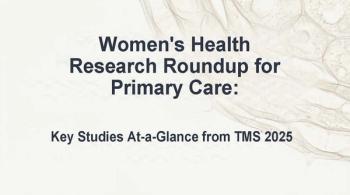
Antimicrobial Resistance During COVID-19 Gained New Ground: Expert Perspective
Widespread antibiotic prescribing in the first year of the pandemic set back US progress on the fight against antimicrobial resistance, says Anne Meneghetti, MD.
"The story about how COVID-19 has affected the antibiotic resistance patterns is really a story of 2 stories, the inpatient story and the outpatient story."
On the inpatient side, nearly 30 000 people died from antimicrobial-resistant infections during 2020, the first year of the pandemic, according to the Centers for Disease Control and Prevention.
Anne Meneghetti, MD, currently executive director of medical information at mobile medical reference app epocrates and trained as a pulmonary critical care physician says she understands well the impulse to treat severely ill hospitalized patients with broad spectrum antibiotics, and when it wasn't clear what the course of severe COVID-19 illness would be, the impulse played out, she said during a recent interview with Patient Care©. She elaborates on the outpatient story as well as on the inpatient story in the video below.
The following transcript has been edited lightly for style and flow.
Patient Care. Would you start with a top line look at how the COVID-19 pandemic has potentially altered the course of bacterial resistance in the US?
Anne Meneghetti, MD. The story about how COVID-19 has affected the antibiotic resistance patterns is really a story of 2 stories, the inpatient story and the outpatient story. On the inpatient side, hospitals were flooded with critically ill patients, especially early on in the pandemic, and those patients had a really lengthy stays. Those who had fever and pneumonia were treated with broad spectrum antibiotics, just as a matter of course, and you know, having trained as a pulmonary critical care physician, I know that impulse to try and cover broadly, it's, it's quite understandable, especially when we didn't really know what the course of severe COVID illness was going to be like. So, according to the CDC report that came out this summer, resistant hospital-onset infections and deaths both increased 15% in the inpatient setting, during the first year of the pandemic. And this is despite years of steady decline in hospital-associated infections that were really hard won by the antimicrobial stewardship committees and infection control programs and hospitals. So that was really disheartening to see.
I think another impact on the inpatient side is that the CDC resources that were dedicated to the inpatient antimicrobial resistance tracking programs, were diverted to COVID, understandably, so we lost some ground in terms of the data and the tracking, compared to previous years.
Then on the outpatient side, there's a different story. Overall, outpatient antibiotic prescribing actually trended favorably lower during the first pandemic year and that was very heartening to see. The epocrates app is a kind of window into what clinicians are thinking. And we saw really early on in March of 2020, a dramatic reduction in the lookups for the antibiotics that are used for, sometimes inappropriately, for upper respiratory infections. And yet, we, we did see a consistent look up for guidance on how to treat, let's say, sexually transmitted diseases like chlamydia. But during the first year of the pandemic, health care seeking behaviors were reduced, clinician office hours and accessibility were reduced, stay-at-home orders were in --place, we had mask mandates—all these things that we were doing to reduce the spread of COVID also likely had a benefit on the spread of respiratory infections in general. So it was great to see that reduction in antibiotic prescribing for respiratory disease. But you know, less is not always more when it comes to antibiotic prescribing. It's possible that during the pandemic, infections that do warrant antibiotics like tuberculosis, like STDs, or gonorrhea, pneumococcus, went untreated, because of the reduction in healthcare seeking behavior during that time. But you know, in the outpatient setting, unlike on the inpatient side, where you have hospitals tracking the bacteria within their walls and their susceptibility patterns on the outpatient side, we don't really have the same level of data as to what's happening with the resistance patterns of superbugs in the community setting.
Newsletter
Enhance your clinical practice with the Patient Care newsletter, offering the latest evidence-based guidelines, diagnostic insights, and treatment strategies for primary care physicians.













































































































































































































































































